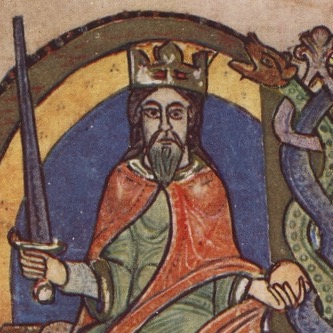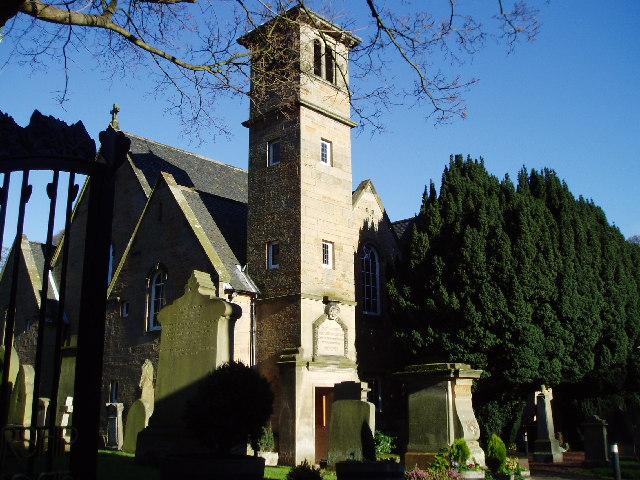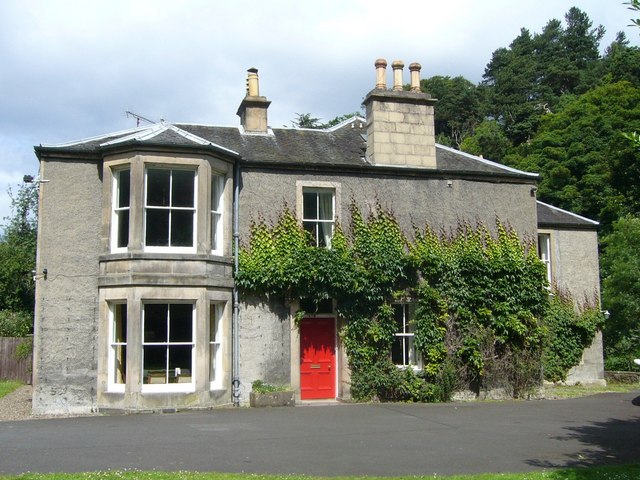|
James Balfour (philosopher)
James Balfour of Pilrig JP (20 August 1705 – 6 March 1795) was a Scottish advocate and philosopher. Life He was born on 20 August 1705 at Pilrig House, midway between Leith and Edinburgh. He was one of the 16 children of Louisa Hamilton and her husband, James Balfour (1681–1737). His father had acquired the estate of Pilrig from the Gilbert family, which had lost a fortune in the Darien Expedition. His father built the current Pilrig House around 1705. After studying law at the University of Edinburgh and the University of Leyden, he was called to the Scottish bar as an advocate. He held the offices of treasurer to the Faculty of Advocates and sheriff-substitute of the county of Edinburgh. In 1754 he was appointed to the chair of Professor of Moral Philosophy in the University of Edinburgh, and in 1764 transferred to that of Professor of Public Law. In 1775 he is still listed as living in Pilrig House, having inherited the property on the death of his father. He was Se ... [...More Info...] [...Related Items...] OR: [Wikipedia] [Google] [Baidu] |
Justice Of The Peace
A justice of the peace (JP) is a judicial officer of a lower or ''puisne'' court, elected or appointed by means of a commission ( letters patent) to keep the peace. In past centuries the term commissioner of the peace was often used with the same meaning. Depending on the jurisdiction, such justices dispense summary justice or merely deal with local administrative applications in common law jurisdictions. Justices of the peace are appointed or elected from the citizens of the jurisdiction in which they serve, and are (or were) usually not required to have any formal legal education in order to qualify for the office. Some jurisdictions have varying forms of training for JPs. History In 1195, Richard I ("the Lionheart") of England and his Minister Hubert Walter commissioned certain knights to preserve the peace in unruly areas. They were responsible to the King in ensuring that the law was upheld and preserving the " King's peace". Therefore, they were known as "keepers of th ... [...More Info...] [...Related Items...] OR: [Wikipedia] [Google] [Baidu] |
Elphinstone Baronets
There have been three baronetcies created for personswith the surname Elphinstone, two in the Baronetage of Nova Scotia and one in the Baronetage of the United Kingdom. As of 2008 two of the creations are extant while one is dormant. The Elphinstone Baronetcy, of Elphinstone in the County of Lanark, was created in the Baronetage of Nova Scotia on 20 June 1628 for William Elphinstone. On his death in 1645 the title became dormant. The Elphinstone Baronetcy, of Logie in the County of Aberdeen, was created in the Baronetage of Nova Scotia on 2 December 1701 for James Elphinstone, with remainder to heirs male whatsoever. The title became dormant on the death of the fourth Baronet in 1743. In 1927 Alexander Logie Elphinstone, the tenth Baronet, managed to claim the title as a descendant of Nicholas Elphinstone, grandson of Sir Henry Elphinstone of Pittendreich, who succeeded to the Elphinstone estates in Stirlingshire in 1435 and who was also the grandfather of Alexander Elphinstone, ... [...More Info...] [...Related Items...] OR: [Wikipedia] [Google] [Baidu] |
Neil McVicar (minister)
Neil McVicar (1672–1747) was a minister of the Church of Scotland. Fluent in both Gaelic and English, McVicar began his ministry in Fort William before moving to Edinburgh's West Kirk in 1707. McVicar was a strong supporter of the Hanoverian succession against waves of Jacobite rebellion throughout the 18th century. He also ministered to Edinburgh's growing Gaelic-speaking population. McVicar remained at the West Kirk until his death in 1747. Life McVicar was born in 1672; his family name literally means "son of the vicar". He was chaplain of Fort William in the late 17th century. In this role, he served both the English-speaking troops in the fort plus the local Gaelic-speaking locals and was fluent in each. In May 1707 he became minister of Edinburgh's West Kirk: one of the oldest and most important charges in Scotland. This was in place of Thomas Paterson, who had moved from Collegiate charge (McVicar's role) to first charge. McVicar stayed in his role for over 40 y ... [...More Info...] [...Related Items...] OR: [Wikipedia] [Google] [Baidu] |
Moderator Of The General Assembly
The moderator of the General Assembly is the chairperson of a General Assembly, the highest court of a Presbyterian or Reformed church. Kirk sessions and presbyteries may also style the chairperson as moderator. The Oxford Dictionary states that a Moderator may be a "Presbyterian minister presiding over an ecclesiastical body". Presbyterian churches are ordered by a presbyterian polity, including a hierarchy of councils or courts of elders, from the local church (kirk) Session through presbyteries (and perhaps synods) to a General Assembly. The moderator presides over the meeting of the court, much as a convener presides over the meeting of a church committee. The moderator is thus the chairperson, and is understood to be a member of the court acting . The moderator calls and constitutes meetings, presides at them, and closes them in prayer. The moderator has a casting, but not a deliberative vote. During a meeting, the title ''moderator'' is used by all other members of th ... [...More Info...] [...Related Items...] OR: [Wikipedia] [Google] [Baidu] |
St Cuthbert's Church, Edinburgh
The Parish Church of St Cuthbert is a parish church of the Church of Scotland in central Edinburgh. Probably founded in the 7th century, the church once covered an extensive parish around the burgh of Edinburgh. The church's current building was designed by Hippolyte Blanc and completed in 1894. St Cuthbert's is situated within a large churchyard that bounds Princes Street Gardens and Lothian Road. A church was probably founded on this site during or shortly after the life of Cuthbert. The church is first recorded in 1128, when David I of Scotland, David I granted it to Holyrood Abbey. At that time, the church covered an extensive parish, which was gradually reduced until the 20th century by the erection and expansion of other parishes, many of which were founded as Chapel of ease, chapels of ease of St Cuthbert's. St Cuthbert's became a Protestant church at the Scottish Reformation in 1560: from after the Reformation until the 19th century, the church was usually called the West ... [...More Info...] [...Related Items...] OR: [Wikipedia] [Google] [Baidu] |
John Paul (minister)
John Paul DD (1795–1873) was a minister of the Church of Scotland who served as Moderator of the General Assembly in 1847. A major figure in Edinburgh society, he was linked to both the Balfours of Leith and the Stevenson family of engineers. Life He was born on 12 March 1795 the son of William Paul (minister), Rev William Paul (1754–1802), minister of the collegiate section of St Cuthbert's Church, Edinburgh and his wife Susan Moncrieff. He was also nephew of Rev Henry Moncrieff-Wellwood first charge minister of the same church. The family lived at Castlebarns in the Tollcross area south of the church. By 1805 his father had died and he was living with his mother in the West Kirk manse. He was educated at the high school in the Old Town, Edinburgh, Old Town then studied at Edinburgh University. In August 1816 he was licensed to preach by the Presbytery of Edinburgh. He was ordained as minister of Straiton in May 1817. He was translated to Maybole in Ayrshire in Septemb ... [...More Info...] [...Related Items...] OR: [Wikipedia] [Google] [Baidu] |
Royal Mile
The Royal Mile () is a succession of streets forming the main thoroughfare of the Old Town of the city of Edinburgh in Scotland. The term was first used descriptively in W. M. Gilbert's ''Edinburgh in the Nineteenth Century'' (1901), describing the city "with its Castle and Palace and the royal mile between", and was further popularised as the title of a guidebook by R. T. Skinner published in 1920, "''The Royal Mile (Edinburgh) Castle to Holyrood(house)''". The Royal Mile runs between two significant locations in the royal history of Scotland: Edinburgh Castle and Holyrood Palace. The name derives from it being the traditional processional route of monarchs, with a total length of approximately one Scots mile, a now obsolete measurement measuring 1.81km. The streets which make up the Royal Mile are (west to east) Castlehill, the Lawnmarket, the High Street, the Canongate and Abbey Strand. The Royal Mile is the busiest tourist street in the Old Town, rivalled only ... [...More Info...] [...Related Items...] OR: [Wikipedia] [Google] [Baidu] |
Robert Louis Stevenson
Robert Louis Stevenson (born Robert Lewis Balfour Stevenson; 13 November 1850 – 3 December 1894) was a Scottish novelist, essayist, poet and travel writer. He is best known for works such as ''Treasure Island'', ''Strange Case of Dr Jekyll and Mr Hyde'', '' Kidnapped'' and ''A Child's Garden of Verses''. Born and educated in Edinburgh, Stevenson suffered from serious bronchial trouble for much of his life, but continued to write prolifically and travel widely in defiance of his poor health. As a young man, he mixed in London literary circles, receiving encouragement from Andrew Lang, Edmund Gosse, Leslie Stephen and W. E. Henley, the last of whom may have provided the model for Long John Silver in ''Treasure Island''. In 1890, he settled in Samoa where, alarmed at increasing European and American influence in the South Sea islands, his writing turned away from romance and adventure fiction toward a darker realism. He died of a stroke in his island home in 1894 at ... [...More Info...] [...Related Items...] OR: [Wikipedia] [Google] [Baidu] |
Lewis Balfour
Lewis Balfour (1777–1860) was a Scottish minister of the Church of Scotland. He was a pivotal figure in the family life of Robert Louis Stevenson. Life He was born on 30 August 1777 at Pilrig House between Edinburgh and Leith, the son of John Balfour of Pilrig (1740–1814), son of James Balfour. His mother was Jean Whytt (1750–1833) of Bennochy Lodge near Kirkcaldy in Fife, daughter of Dr Robert Whytt, Professor of Medicine at Edinburgh University. He was christened on 14 May 1777 in South Leith Parish Church. Lewis was educated at the High School in Edinburgh then studied Divinity at Edinburgh University. He was licensed to preach by the Church of Scotland in 1805 and in August 1806 he was ordained as minister of Sorn. In 1823 James Earl of Lauderdale acted as his patron and in 1824 he was translated to Colinton parish south-west of Edinburgh and remained there for the rest of his life. From 1850 onwards his young grandson Robert Louis Stevenson was a frequent visit ... [...More Info...] [...Related Items...] OR: [Wikipedia] [Google] [Baidu] |
Institution Of Professional Engineers New Zealand
Engineering New Zealand Te Ao Rangahau (ENZ; previously the New Zealand Institution of Engineers – NZIE and then Institution of Professional Engineers New Zealand – IPENZ) is a not-for-profit professional body that promotes the integrity and interests of members, the profession, and the industry. It seeks to "bring engineering to life" and has more than 20,000 members. The organisation's strategy is to deliver greater credibility, recognition, influence and connection for members. It promotes engineering as a career and advocates on behalf of members. Engineering New Zealand Te Ao Rangahau sets standards and performs assessments that meet international standards for Chartered Memberships and Registrations for Chartered Professional Engineers. Regional branches run networking events, while technical groups help members stay up-to-date on specific areas of expertise. Members can access continuing professional development and gain experience as volunteers by serving on committ ... [...More Info...] [...Related Items...] OR: [Wikipedia] [Google] [Baidu] |
James Balfour (engineer)
James Melville Balfour (2 June 1831 – 19 December 1869) was a Scottish-born New Zealand marine engineer. He is best remembered for the network of lighthouses that he designed. Balfour was a highly energetic man, who despite drowning after only six years in the country, has left an impressive list of projects either designed or constructed by him. He was initially employed by the Otago Provincial Council before his appointment by the Government of New Zealand as the colonial marine engineer. Early life and family Balfour was born in the manse of Colinton Parish Church south-west of Edinburgh, Scotland on 2 June 1831. He was the youngest son of Rev. Lewis Balfour (1777–1860), D.D., who for 37 years was minister for the Colinton parish. The philosopher James Balfour was his father's paternal grandfather, and the physician Robert Whytt was his father's maternal grandfather. His father had married Anne Mackintosh on 24 February 1806. Among his siblings were the physician and h ... [...More Info...] [...Related Items...] OR: [Wikipedia] [Google] [Baidu] |
George William Balfour
George William Balfour FRSE (2 June 1823 – 9 August 1903) was a Scottish physician, known as a heart specialist. Early life and education Born at the manse of Sorn, Ayrshire, on 2 June 1823, he was the sixth son and eighth of the thirteen children of Rev Lewis Balfour DD (1777-1860), by his wife Henrietta Scott, third daughter of George Smith, D.D., minister of Galston; James Balfour was a brother, Thomas Stevenson was a brother-in-law, and Robert Louis Stevenson was a nephew. After education at Colinton, he planned first to study veterinary science and settle in Australia; but entered the Medical School of Edinburgh. In 1845 he graduated M.D. at the University of St. Andrews, and was licensed by the Royal College of Surgeons of Edinburgh. Career After acting as house surgeon to the Edinburgh Royal Maternity Hospital, Balfour in 1846 went to Vienna, where he studied under Joseph Škoda, Carl Ludwig Sigmund, and Wilhelm Fleischmann the homeopath. Balfour was a general ... [...More Info...] [...Related Items...] OR: [Wikipedia] [Google] [Baidu] |







